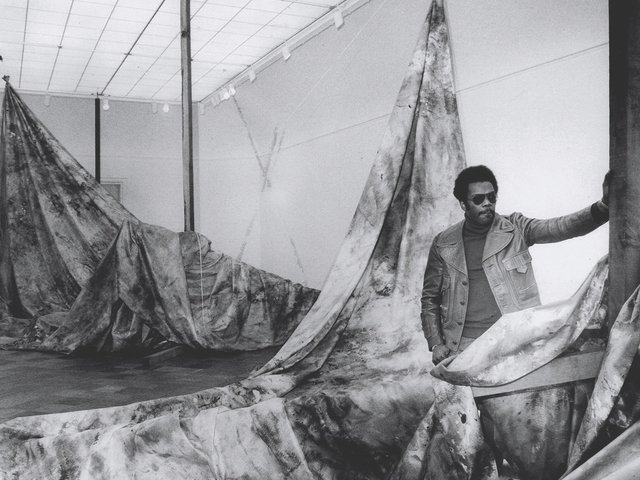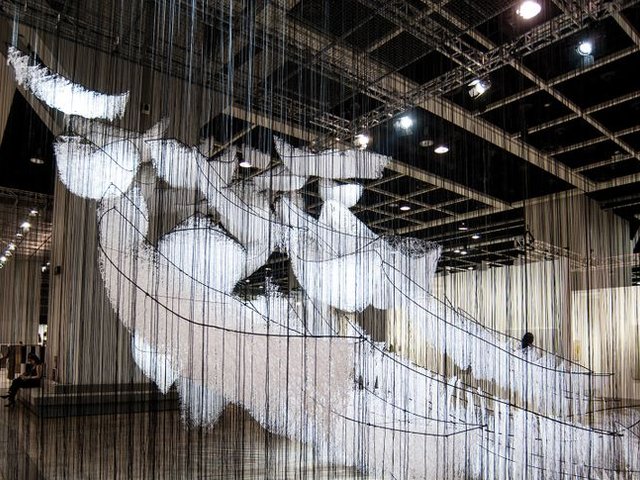“I always find myself playing a game of Tetris in order to create a square that can accommodate different works to make for a very intuitive [presentation],” says Gianni Jetzer, the curator of Art Basel’s Unlimited, the sector devoted to large-scale works. “It’s important for me to give every artist the greatest chance to be seen.” Jetzer took us on a whistle-stop tour of Unlimited and chose a few highlights from this year’s display.
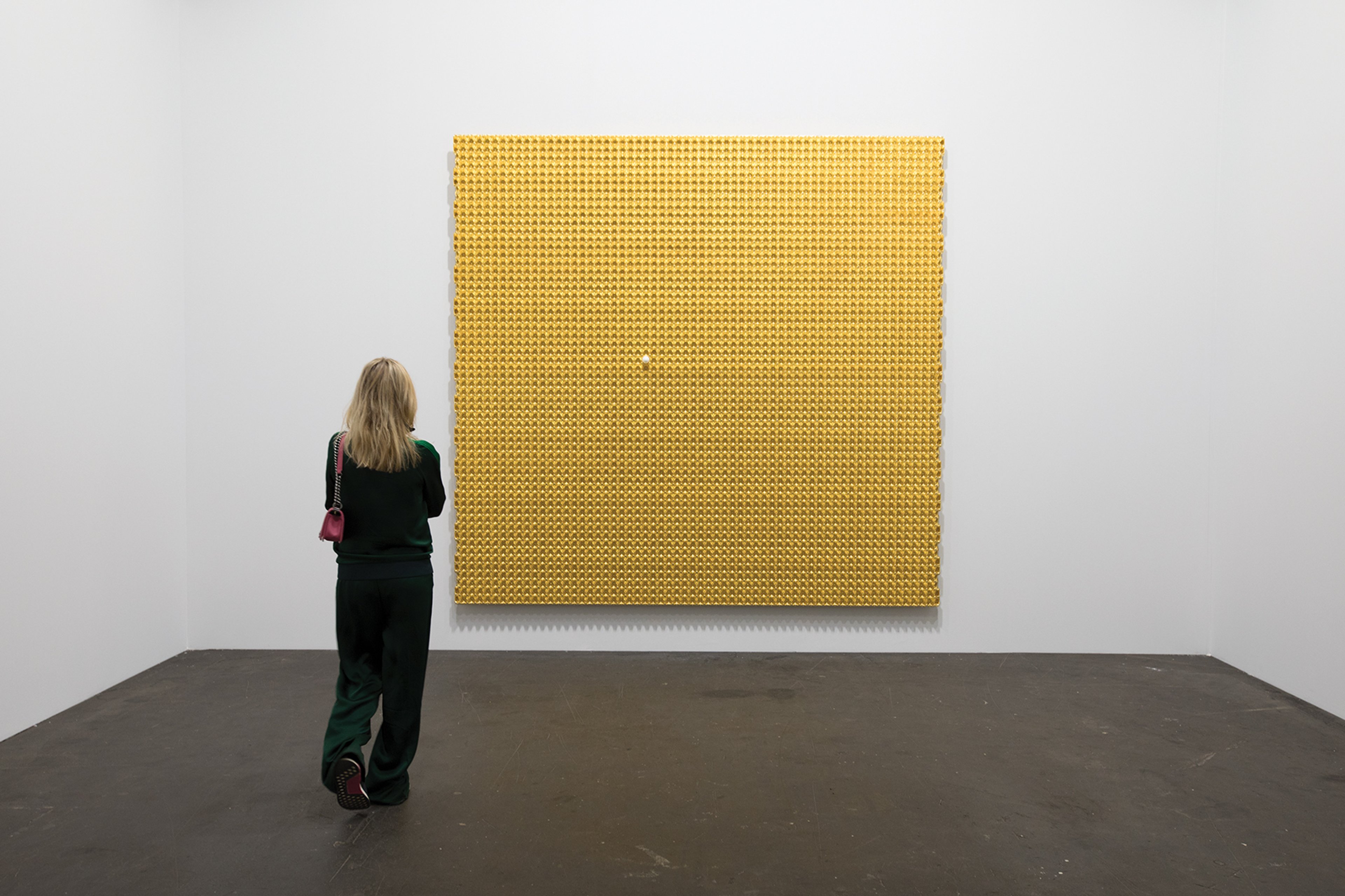
“It’s like an egg carton blown up to an incredible size. Because it is a square and a wall piece, it has a certain relationship to painting although it is clearly not a hand-painted canvas. The gold leaf offers a second reference to religious paintings, as it was often used to show the importance of saints. The single egg [in the work] is an autobiographical element because the artist was an only child so his socialisation and his becoming who he is today was influenced by Chinese policy, which meant that boys and girls of his generation are only children. On the wall are family photographs; one shows him as a child standing in Tiananmen Square eight years after the [1989] massacre. I asked him if he knew about it when he posed for the picture and he said that he only found out about it in college. It shows us a certain innocence and the loneliness of being an only child and how it can have an impact on a society and on a life.” He Xiangyu's Untitled (2018). White Space Beijing. Photo: www.david-owens.co.uk
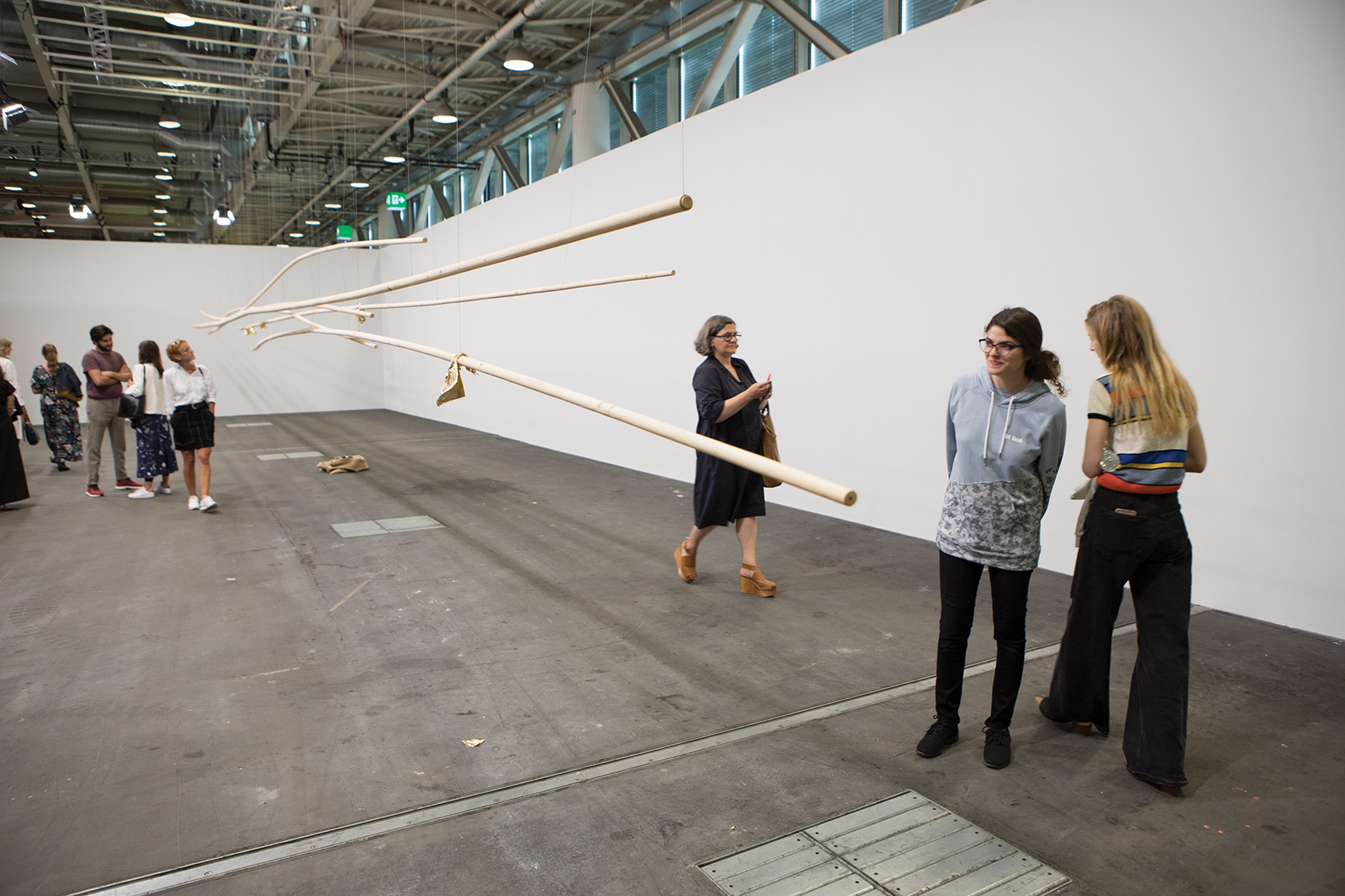
“It’s great to present figures like Lupas because she has been slightly forgotten in Europe and hasn’t received much exposure in the US. Believe it or not, this is the first time the piece has been exhibited all together. The trees measure the humidity in the space, so they change shape [with changes in the humidity levels]. The installation contradicts the archetypal reading of a tree rooted in the earth. Instead, it’s horizontal, so it becomes this line, almost like a three-dimensional drawing. Lupas has attached gold leaf accents and has placed a box of objects or stones with little rings that indicate they can be hung from the Christmas tree. She has reinvented an iconic symbol and made it into something different.” Ana Lupas's Christmas trees for the years to come (1993). P420. Photo: www.david-owens.co.uk
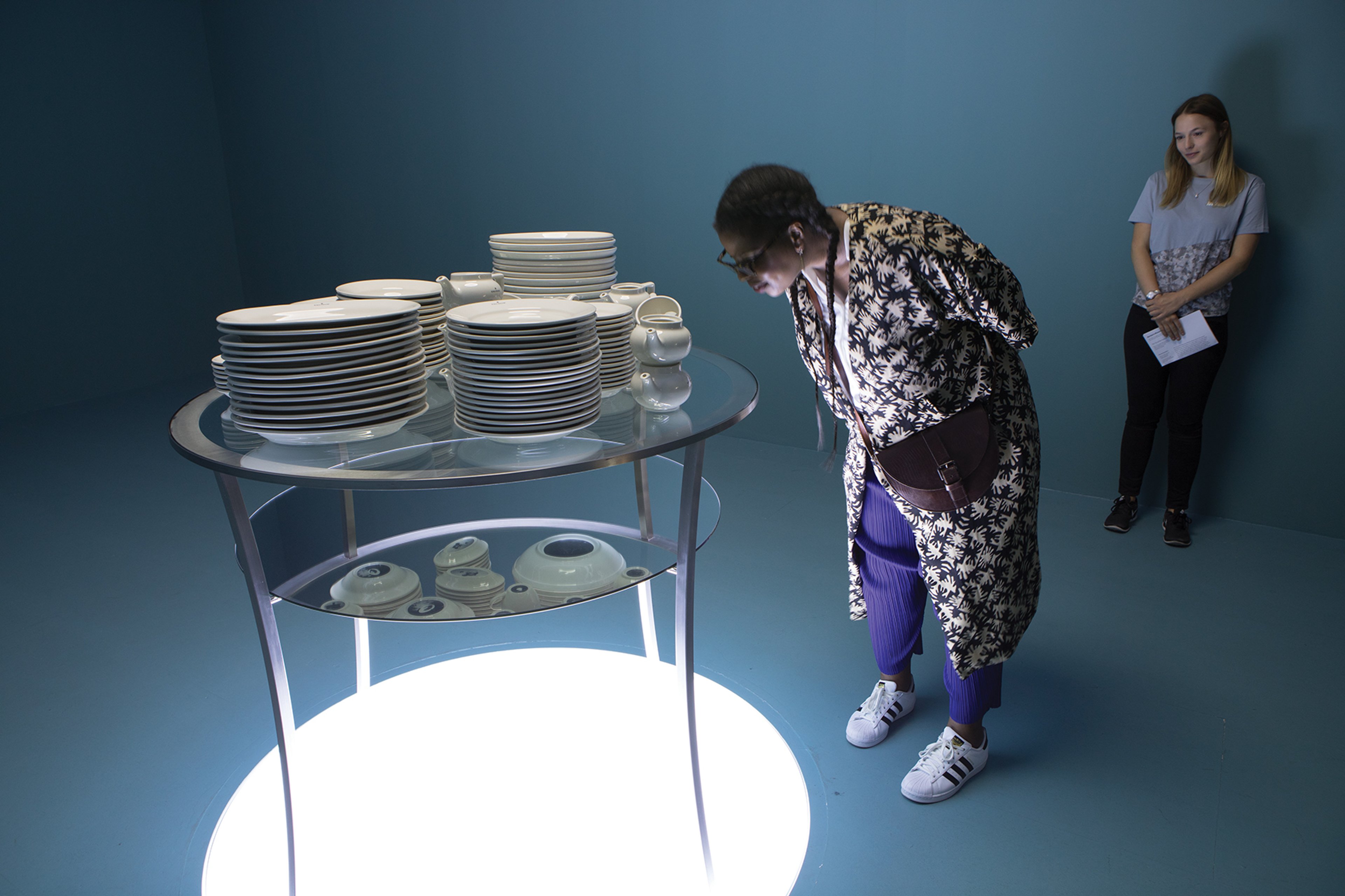
“This piece brings together deep space and deep sea. The tip of the iceberg and sets of china [stamped with the Titanic logo] allude to the sea and [the sinking of the] Titanic, while the lunette on the ceiling depicts objects, such as wrenches, cameras, gloves and screwdrivers, that Nasa has reported as being lost in space and so are presumably orbiting the earth. The walls are a deep blue—again, a reference to the sea and sky. She was one of the first artists from the 1980s who staged objects in a conceptual way. In the 1970s, much of the conceptual art was very dry.” Barbara Bloom's The Tip of the Iceberg (1991). Galerie Gisela Capitain in collaboration with Galleria Raffaella Cortese and David Lewis. Photo: www.david-owens.co.uk
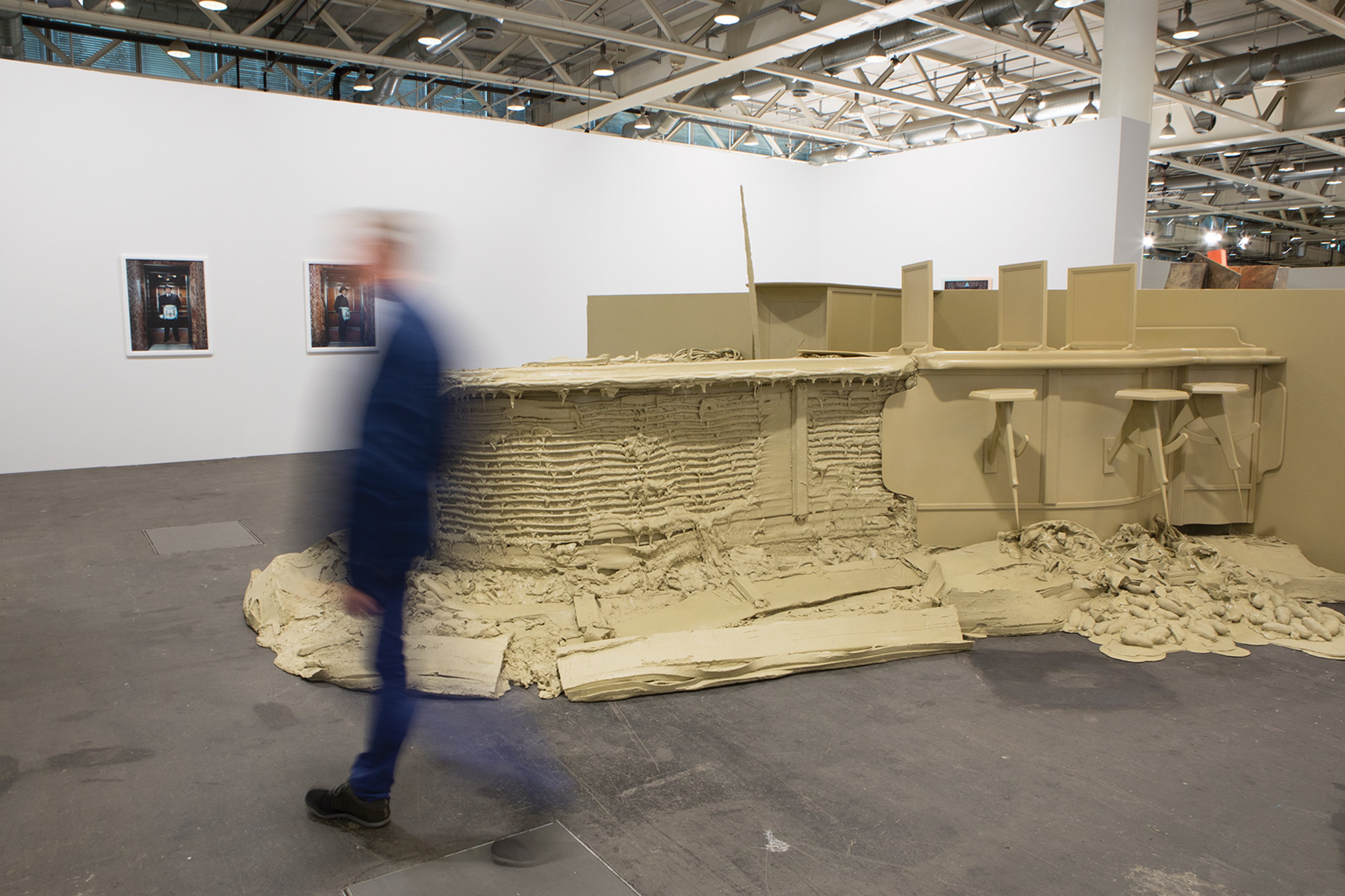
“It is a reinterpretation in plastic of a piece from his film Cremaster 3 [2002], which was originally made from petroleum jelly—an unstable material. It combines different elements from the film, which was shot in the Chrysler Building—a [structure] mostly built by Irish freemason contractors and builders. The bar is inspired by a classic Irish bar, but part of it is twisted and crushed. It also incorporates freemason symbols, and the pile of potatoes references the Irish potato famine. It is shown with photographs from the film.” Matthew Barney's Partition (2002/2018). Sadie Coles HQ, Gladstone Gallery and Regen Projects. Photo: www.david-owens.co.uk
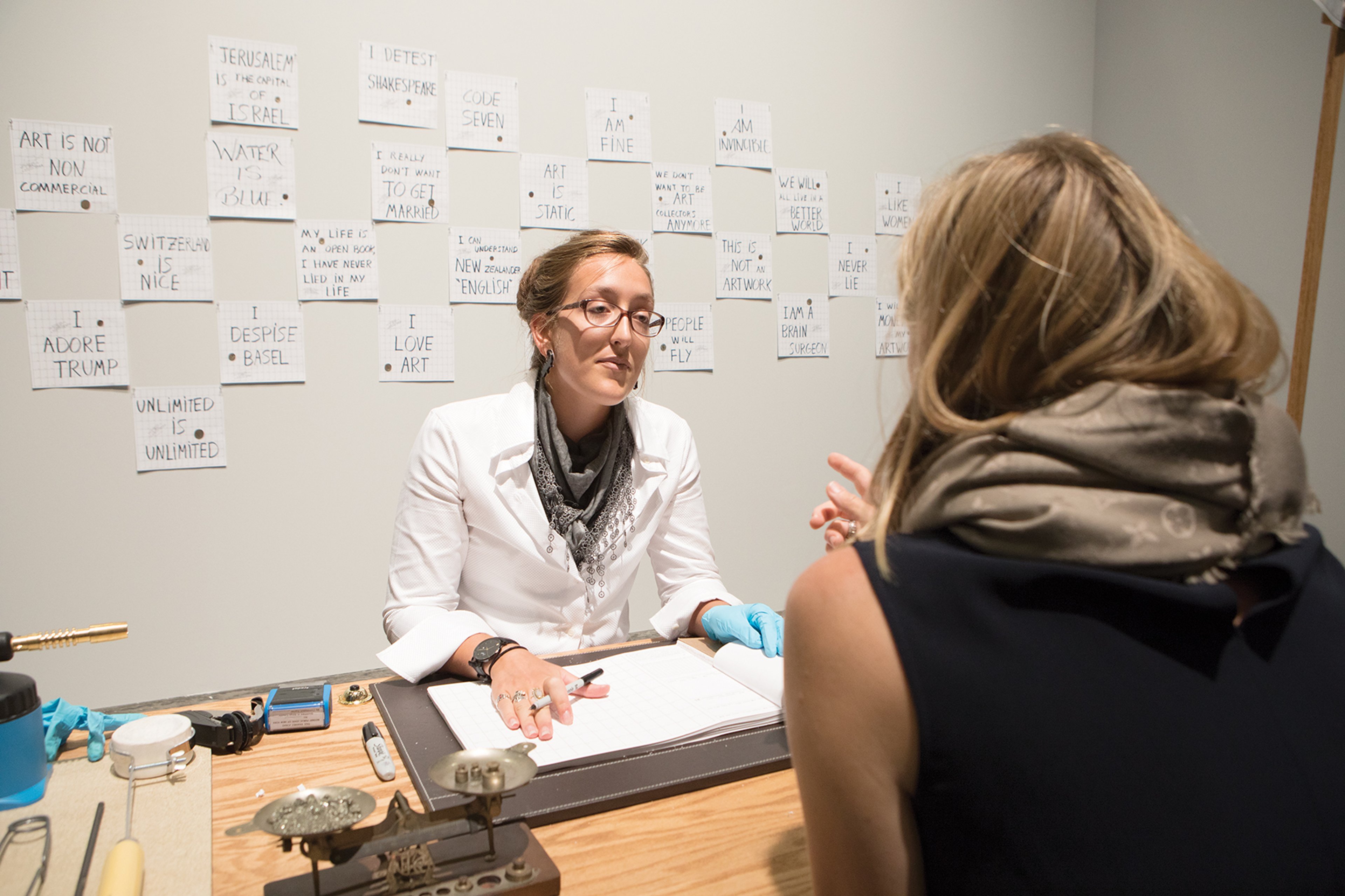
“This is a work I really cherish. [As part of the installation] visitors pull a number and wait for [the artist or an assistant] to write down and notarise the alternative facts they bring to them. A coin is exchanged as a symbolic payment. The coin is then gilded, which is in itself a symbolic act, as it may now look like gold, but is not gold. The coin is glued to the paper, which is then notarised. It has to do with how a state authority can produce the truth and that it is actually a very bureaucratic and simple system that is valid and seems to function.” Paul Ramirez Jonas's Alternative Facts (2017). Galeria Nara Roesler. Photo: www.david-owens.co.uk
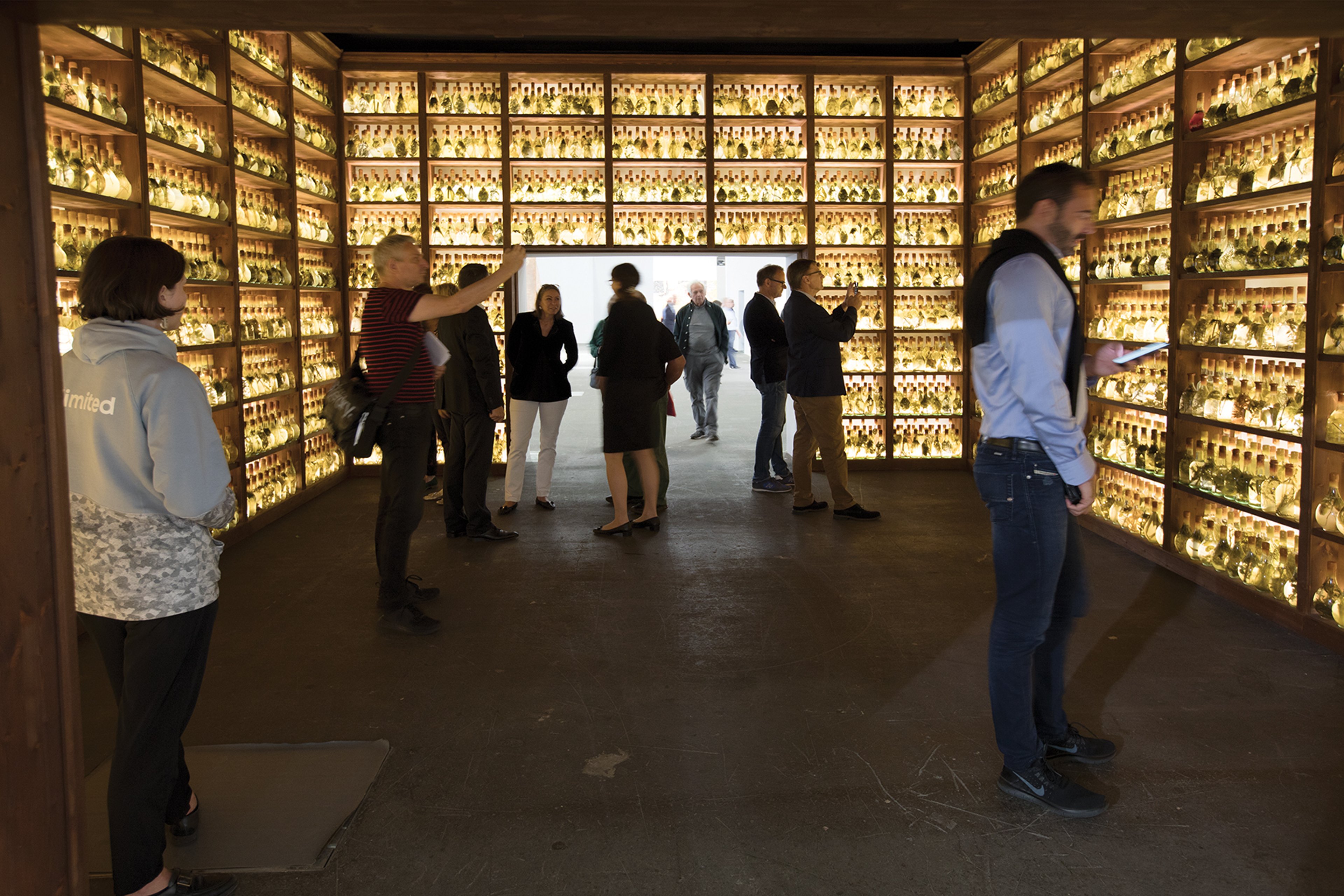
“José Yaque, a Cuban artist who lives in Havana, has created what is almost like a whisky bar but with natural materials that one might find in a botanist’s [laboratory]. It’s a way to encapsulate nature. You can see the different levels of decomposition—the live process that starts from the plants rotting—in each bottle by looking at the colour of the water. The sister piece was shown at the last Venice Biennale.” José Yaque's TUMBA ABIERTA III (2018). Galleria Continua. Photo: www.david-owens.co.uk
“It’s like an egg carton blown up to an incredible size. Because it is a square and a wall piece, it has a certain relationship to painting although it is clearly not a hand-painted canvas. The gold leaf offers a second reference to religious paintings, as it was often used to show the importance of saints. The single egg [in the work] is an autobiographical element because the artist was an only child so his socialisation and his becoming who he is today was influenced by Chinese policy, which meant that boys and girls of his generation are only children. On the wall are family photographs; one shows him as a child standing in Tiananmen Square eight years after the [1989] massacre. I asked him if he knew about it when he posed for the picture and he said that he only found out about it in college. It shows us a certain innocence and the loneliness of being an only child and how it can have an impact on a society and on a life.” He Xiangyu's Untitled (2018). White Space Beijing. Photo: www.david-owens.co.uk
In pictures: must-see works at Art Basel's Unlimited
The art fair's section dedicated to monumental works is full of plastic, plants—and lots of gold
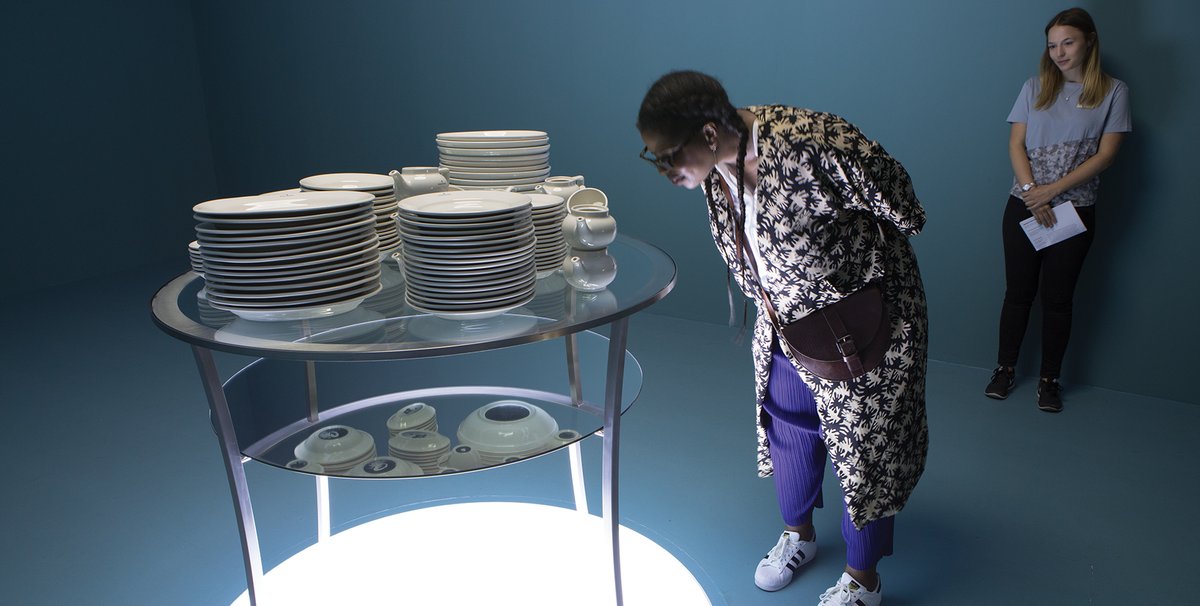
Barbara Bloom's The Tip of the Iceberg (1991) www.david-owens.co.uk


